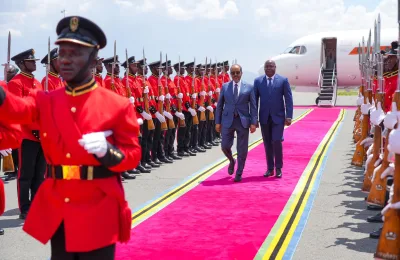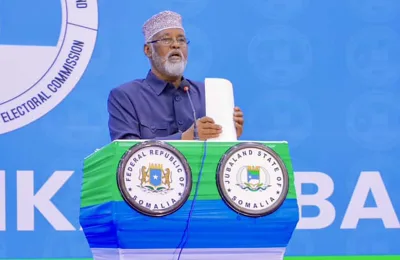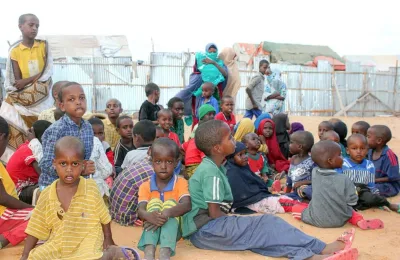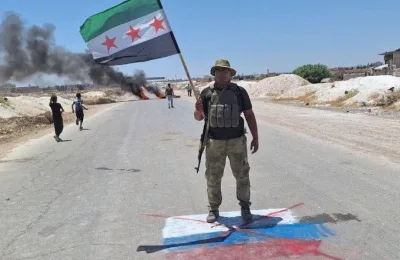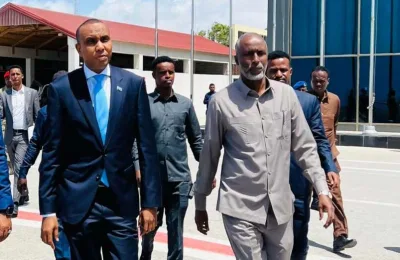MOMBASA, 28 July 2014 (IRIN) – More than 21 Islamic clerics have been gunned down in…
 MOMBASA, 28 July 2014 (IRIN) – More than 21 Islamic clerics have been gunned down in Kenya’s southeastern port city of Mombasa over the past two years, according to the human rights group Haki Africa. All but one of them was linked by the government to terrorism and support for the al-Shabab insurgency in neighboring Somalia.
MOMBASA, 28 July 2014 (IRIN) – More than 21 Islamic clerics have been gunned down in Kenya’s southeastern port city of Mombasa over the past two years, according to the human rights group Haki Africa. All but one of them was linked by the government to terrorism and support for the al-Shabab insurgency in neighboring Somalia.
The Kenyan government has strenuously denied allegations the security forces are involved in extra-judicial killings. Mombasa Country Commissioner Nelson Marwa told IRIN: “It is easy to point fingers, but do they have any evidence?” Human rights groups have called for the killings to be investigated.
Mombasa is fertile recruiting ground for al-Shabab, working through radical mosques and clerics. These leaders portray the conflict across the border as jihad, and for many youth, that has an energizing appeal. “In the competition for followers, the moderates appear to be losing the battle for winning over the youth,” said Hussein Khaled of Haki Africa. “The killing of so-called radical imams is winning them sympathy and support.”
Sheik Juma Ngao of the Kenya Muslim National Advisory Council described the recruitment as “human trafficking in the name of jihad”. He alleged each young man crossing the border earns the recruiter the equivalent of US$1,150. And, he added, “they don’t go for the scholars, they go for the poor.”
But Khaled described a deepening well of anger fuelled by joblessness and a growing perception among some Muslims in Mombasa, overlooked by historically skewed development, of injustice; that they are no longer “part of Kenya”. The death of each cleric in suspicious circumstances furthers radicalization. “It’s gone beyond the money a recruit might earn. They are now doing it in the belief that they are being harassed, killed, and the only way is to fight back,” he said.
There is friction between clerics splintered into several organizations in Mombasa, based on ideological conviction, and the growing danger of being perceived as on the “wrong” side. “Moderates” accuse “radicals” of deliberately grooming young men for combat in the name of Islam, while the Salafists condemn the silence and lack of indignation from their co-religionists when one of them is killed.
Haki Africa has held three meetings to try and bridge the “huge gulf of misunderstanding”. The consensus from both sides was “leave us alone to practice our interpretation,” said Khaled.
“They were open that they were for jihad and that they will die for it,” said Ngao, who was at the meetings. “They said ‘If you don’t support us, leave us alone, don’t touch us. But if you touch us, we’ll kill you’.”
Said Khaled: “When we went into dialogue we didn’t understand what the youth were going through… You can’t divorce from this the discrimination and marginalization of the region. We had only been exposed to one side [of the argument]. So the government needs to encourage inter- and intra-religious dialogue.”
But the killing in April of Sheikh Makaburi, a prominent leader at the controversial Masjid Musa Mosque, has put dialogue on hold. The shooting of moderate Sheikh Mohammed Idriss in June, the chair of the Council of Imams and Preachers of Kenya, is widely seen as revenge for his death.
The July murder of Shahid Bhat on his way home from the airport has further heightened tensions. Bhat, a successful businessman, had been arrested and charged with financing terror operations in Mombasa and the coast. He was shot 200m from the Changamwe police station.
The following is a list of Muslim clerics and youth leaders killed in or around Mombasa in the past two years. In each case no arrests have yet been made.
10 April 2012: Sheikh Mohammed Kassim
Linked to the Machakos Country bus blast in which six people died and over 60 were injured, Mohammed Kassim’s body was found in a Kilifi mortuary several kilometres from his Mombasa home. His relatives said he was abducted from a matatu (public transport vehicle) in Mombasa’s Likoni area before being bundled into another vehicle before his death.
13 April 2012: Sheikh Samir Khan
The body of the Muslim cleric was found dumped, and mutilated, in Tsavo Forest in Taita Taveta County along the Nairobi-Mombasa highway three days after he was reported missing. A former confidant of controversial Muslim preacher Aboud Rogo Mohammed, the 39-year-old was facing several terror related charges in Mombasa courts. He had also been accused of being behind the recruitment to al-Shabab of youths in Mombasa and Kwale counties.
27 August 2012: Sheikh Aboud Rogo
Aboud Rogo Mohammed was on US and UN sanctions lists for allegedly supporting Somalia’s al-Shabab militants. The UN Security Council imposed a travel ban and asset freeze on him, saying he had provided financial, material, logistical or technical support to al-Shabab. It accused him of being the “main ideological leader” of Kenya’s al-Hijra group, also known as the Muslim Youth Centre, which is viewed as a close ally of al-Shabab.
He was accused of using the extremist group as a pathway for radicalization and recruitment of principally Swahili-speaking Africans to carry out violent activities in Somalia. He was also facing charges of plotting terror attacks in the East Africa region. He was killed along the Mombasa-Malindi highway, while driving a vehicle containing his wife and other family members.
Following the killing, protests erupted in several parts of Mombasa for a couple of days, resulting in in several people, including a security officer, being attacked and killed, as radical youths sought revenge. Several churches were torched, and property destroyed. The sheikh preached at the controversial Masjid Musa mosque.
29 October 2012: Omar Faraj and Titus Nabiswa
Omar Faraj, 30, a Muslim youth leader, and Titus Nabiswa, 27, a Muslim convert from western Kenya, died after what is alleged to have been a shoot-out. Coast deputy CID boss John Gachomo said the police recovered two grenades in the operation at Mwembe Tanganyika area in Majengo, Mombasa. Nabiswa, who had been arrested, led Anti-Terror Police officers to his alleged accomplice Omar Faraj, in Majengo, where it is said police encountered resistance from the latter, leading to a shoot-out. Nabiswa is said to have died in crossfire.
27 June 2013: Kassim Omollo
The Anti-Terror Police Unit described Kassim Omollo, who was gunned down in Bakarani estate, Mombasa, as an al-Shabab trainer, a bomb expert and an accomplice of both British terror suspect Jermaine Grant and a Kenyan, Faud Abubakar Manswad, who is believed to be operating from Somalia. Police reported having recovered two hand grenades, a pistol, a loaded AK- 47 rifle, and chemicals for manufacturing explosives, in the deceased person’s house. They said he was planning a terror attack in Mombasa. Police also recovered fake Kenyan currency, and chemicals used to print fake banknotes, as well as hand-written notes outlining jihad teachings.
27 June 2013: Salim Mohammed Nero
Salim Mohammed Nero was allegedly killed in what police described as a shoot-out between them and Nero in Kiembeni estate, Mombasa, on the same day Kassim Omollo was killed. According to the police, an AK-47, five magazines, and 145 rounds of ammunition were recovered from Nero.
3 October 2013: Sheikh Ibrahim Omar Ismail, Gadaffi Mohammed (Shebe), Omar Aburumesia, Issa Abdalla
Viewed as the immediate predecessor to Sheikh Aboud Rogo, Ibrahim Ismail was shot by people his friends and fellow clerics believe were government security personnel. He was driving along the Mombasa-Malindi highway when gunmen opened fire on their vehicle. Three friends in the vehicle also died on the spot – Gadaffi Mohammed (also known as Shebe), Omar Aburumesia and Issa Abdalla.
In mid-July 2013, the National Intelligence Service accused Sheikh Ismail of activating an al-Shabab cell in Mtopanga estate in Kisauni, Mombasa, and inviting four newly trained jihadists from Somalia to Mombasa to plot “a bombing campaign” in Mombasa and Nairobi in revenge for the killing of Sheikh Aboud Rogo in 2012.
3 December 2013: Faiz Mohammed Rufai
The body of Faiz Mohammed Rufai, a madrassa teacher in Malindi and a close friend of Ahmed Bakshueni, was found dumped on Mamburui beach in Magarini in early December. According to the police, he was kidnapped by people suspected to have been radical Muslim youths in the Ngomeni area, who had chopped off his head and dumped his body in the Indian Ocean. Rufai is said to have been working as a double agent – i.e. for a terror group and security agents. Al-Shabab accused him of betrayal for giving information to local and international security agencies.
6 December 2013: Sheikh Suleiman Mwayuyu
Sheikh Suleiman Mwayuyu was shot dead when gunmen hijacked a minibus travelling from Mombasa to Ukunda. According to eyewitnesses, two occupants in a van trailed the minibus from Mombasa, before blocking it at Tiwi on the Mombasa-Ukunda road. They ordered everyone to lie down before singling out the cleric whom they shot in the head and neck at close range. The cleric worked as a tailor in Msikiti Nuru area of Ukunda.
28 January 2014: Ahmed Abdalla Bakshueni
Three gunmen riding on a motorbike shot dead Ahmed Abdallah Bakshueni, a youth leader, about 200m from Malindi police station. Bakshueni had just parked his car in front of his shop when two men pulled up on a motorbike and shot him three times in the chest before fleeing. Police sources said Bakshueni could have been on a terrorist hit list because he had been working closely with them, the FBI, the Anti-Terror Police Unit and the CIA as an informer.
1 April 2014: Sheikh Makaburi
A prominent leader at the controversial Masjid Musa Mosque, the scene of frequent unrest in Mombasa, the firebrand cleric in his 50s had just stepped out of the Shanzu law courts along the Mombasa-Malindi highway (where several youths from Masjid Musa mosque faced charges of engaging in Jihadist activities), when he was sprayed with bullets at close range. He had said it was just a matter of time before he would be assassinated by the Anti-Terror Police Unit, which he often accused of trailing and threatning him.
A vocal supporter of Osama Bin Laden, Makaburi justified attacks on churches and described the 2013 attack on the Westgate shopping mall in Nairobi (claimed by al-Shabab) as “100 percent justified”. Makaburi was also on a UN sanctions list. He and British terror suspect Jermaine Grant, are said to have assumed the leadership of Al-Qaeda and its affiliates in Kenya and East Africa following the 27 August 2012 killing of his former comrade Sheikh Aboud Rogo.
10 June 2014: Sheikh Mohammed Idriss
Unknown gunmen shot and killed Council of Imams and Preachers of Kenya (CIPK) chairman Sheikh Mohammed Idris in Likoni, Mombasa, as he left for morning prayers at a mosque near his home. Idriss was also the chairman of Sakina Mosque in Mombasa, one of a few mosques in the city that had been at the centre of a power struggle between its officials and radical youths who wanted to take it over. Idriss had expressed fears for his life after radical youths threatened him and other CIPK members. The cleric was a leading campaigner against radicalization of the youth and jihadist teachings in mosques in the region. Mombasa CID boss Henry Ondieki said they suspected Sheikh Idriss was killed by people well known to him.
11 July 2014: Shahid Bhat
He was killed driving from Mombasa’s Moi Airport. His son, also in the car, was not hit in the gunfire. A successful businessman owning a major transport company, Bhat had earlier in the year been arrested and charged with financing terror in Coast Province. He had denied the allegation and was out on bail.
Source: IRIN


